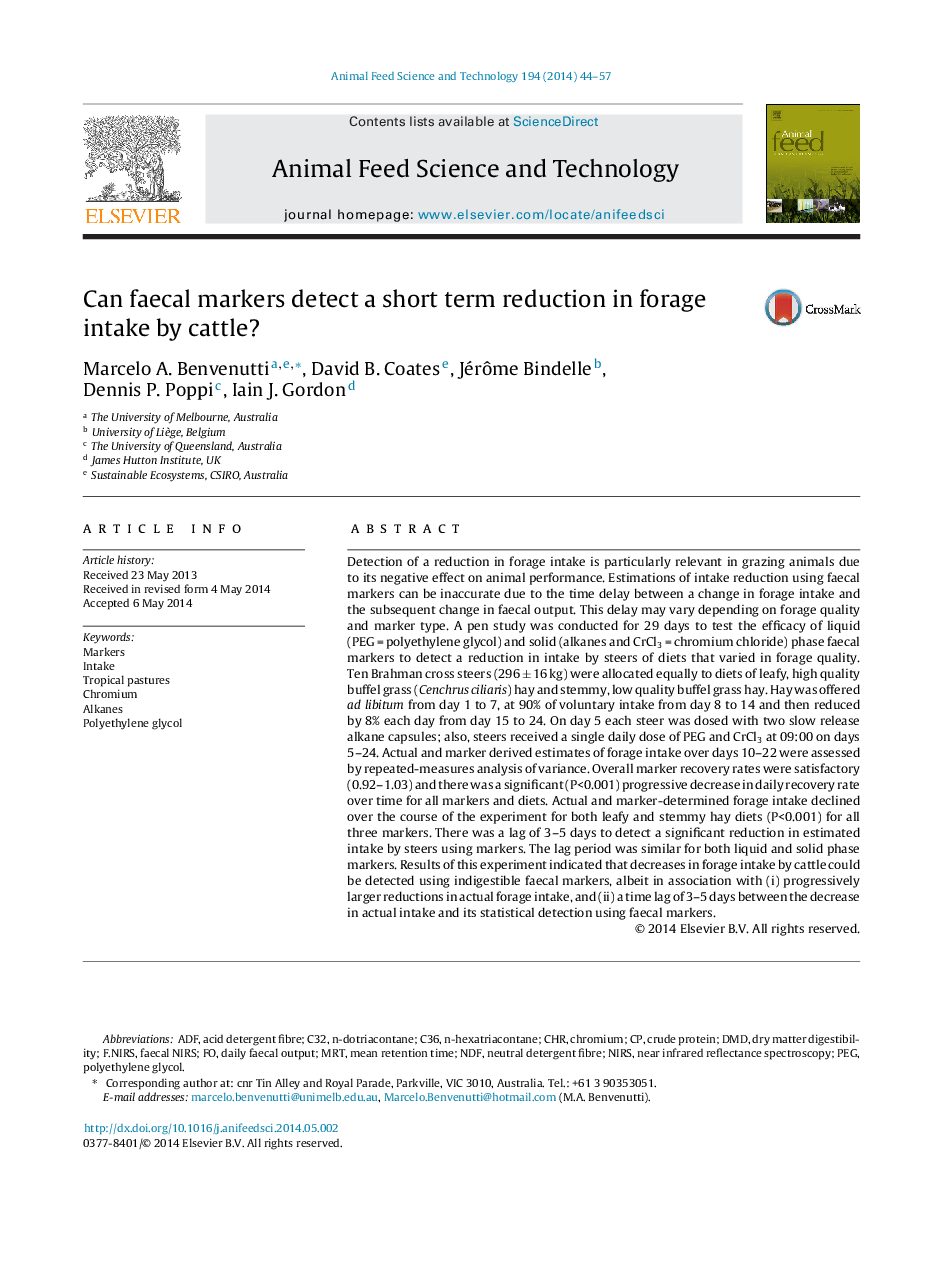| کد مقاله | کد نشریه | سال انتشار | مقاله انگلیسی | نسخه تمام متن |
|---|---|---|---|---|
| 2419565 | 1552391 | 2014 | 14 صفحه PDF | دانلود رایگان |
• The results indicated that faecal markers can detect a reduction in forage intake.
• Accuracy was strongly affected by diurnal variation in faecal marker concentration.
• There was a lag of 3–5 days to detect a significant reduction in intake.
• The lag period was similar for both liquid phase and solid phase markers.
Detection of a reduction in forage intake is particularly relevant in grazing animals due to its negative effect on animal performance. Estimations of intake reduction using faecal markers can be inaccurate due to the time delay between a change in forage intake and the subsequent change in faecal output. This delay may vary depending on forage quality and marker type. A pen study was conducted for 29 days to test the efficacy of liquid (PEG = polyethylene glycol) and solid (alkanes and CrCl3 = chromium chloride) phase faecal markers to detect a reduction in intake by steers of diets that varied in forage quality. Ten Brahman cross steers (296 ± 16 kg) were allocated equally to diets of leafy, high quality buffel grass (Cenchrus ciliaris) hay and stemmy, low quality buffel grass hay. Hay was offered ad libitum from day 1 to 7, at 90% of voluntary intake from day 8 to 14 and then reduced by 8% each day from day 15 to 24. On day 5 each steer was dosed with two slow release alkane capsules; also, steers received a single daily dose of PEG and CrCl3 at 09:00 on days 5–24. Actual and marker derived estimates of forage intake over days 10–22 were assessed by repeated-measures analysis of variance. Overall marker recovery rates were satisfactory (0.92–1.03) and there was a significant (P<0.001) progressive decrease in daily recovery rate over time for all markers and diets. Actual and marker-determined forage intake declined over the course of the experiment for both leafy and stemmy hay diets (P<0.001) for all three markers. There was a lag of 3–5 days to detect a significant reduction in estimated intake by steers using markers. The lag period was similar for both liquid and solid phase markers. Results of this experiment indicated that decreases in forage intake by cattle could be detected using indigestible faecal markers, albeit in association with (i) progressively larger reductions in actual forage intake, and (ii) a time lag of 3–5 days between the decrease in actual intake and its statistical detection using faecal markers.
Journal: Animal Feed Science and Technology - Volume 194, August 2014, Pages 44–57
